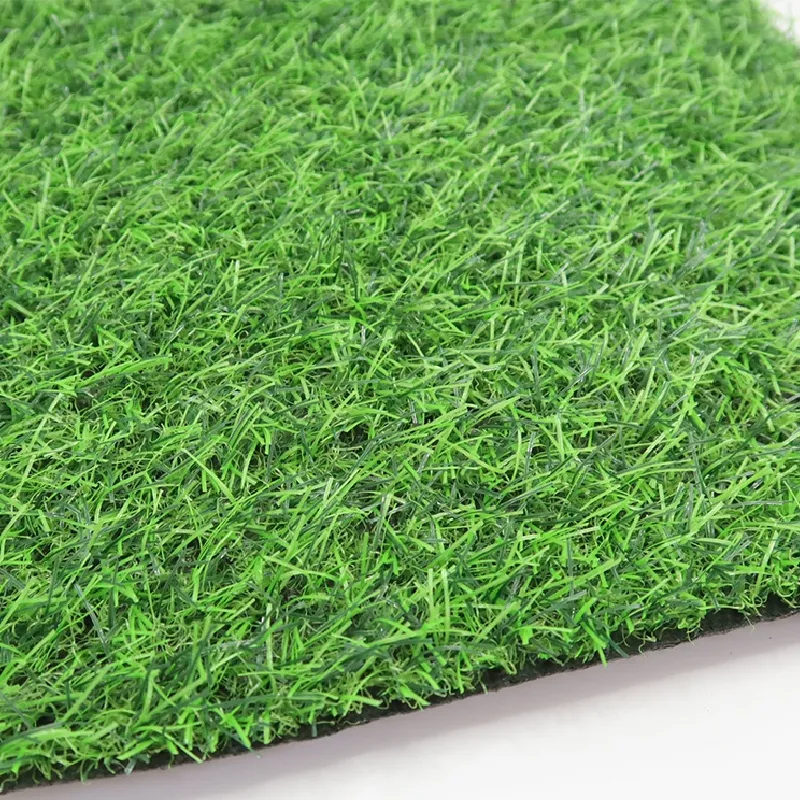
- Afrikaans
- Arabic
- Belarusian
- Bengali
- Czech
- Danish
- Dutch
- English
- Esperanto
- Estonian
- Finnish
- French
- German
- Greek
- Hindi
- Hungarian
- Icelandic
- Indonesian
- irish
- Italian
- Japanese
- kazakh
- Rwandese
- Korean
- Kyrgyz
- Lao
- Latin
- Latvian
- Malay
- Mongolian
- Myanmar
- Norwegian
- Persian
- Polish
- Portuguese
- Romanian
- Russian
- Serbian
- Spanish
- Swedish
- Tagalog
- Tajik
- Thai
- Turkish
- Turkmen
- Ukrainian
- Urdu
- Uighur
- Uzbek
- Vietnamese
laying fake grass
Oct . 20, 2024 02:58 Back to list
Laying Fake Grass The Benefits and Best Practices
In recent years, the popularity of fake grass, also known as artificial turf, has surged across residential and commercial landscapes. Offering a maintenance-free alternative to natural grass, it presents a viable solution for those looking to enhance their outdoor spaces without the demanding upkeep of traditional lawns. This article will delve into the benefits of laying fake grass, as well as provide best practices for installation to ensure a lush and long-lasting result.
Benefits of Fake Grass
1. Low Maintenance One of the primary advantages of installing fake grass is the drastic reduction in maintenance requirements. Unlike natural grass that needs regular mowing, watering, and fertilization, synthetic turf remains green and pristine throughout the year. Homeowners can spend less time on upkeep and more time enjoying their outdoor spaces.
2. Water Conservation In an era where water scarcity is a growing concern, artificial turf can significantly reduce water usage. Lawns traditionally require a substantial amount of water for irrigation, especially in hot climates. Fake grass eliminates the need for regular watering, making it an eco-friendly choice that can help conserve this precious resource.
3. Durability and Longevity Modern synthetic grasses are designed to withstand varying weather conditions and heavy foot traffic. This durability means they can be suitable for active families with children and pets, or even for sports fields where rigorous use is common. With proper installation and care, fake grass can last 15 to 25 years, making it a worthwhile long-term investment.
4. Allergy-Friendly For those suffering from allergies, natural grass can be a source of sneezing, itching, and discomfort due to pollen and other allergens. Fake grass, on the other hand, does not produce pollen, allowing individuals to enjoy their yard without allergy woes.
Best Practices for Installation
While laying fake grass can seem straightforward, proper installation is crucial to achieving a seamless and visually appealing lawn. Here are some best practices for laying fake grass
laying fake grass

1. Preparation of the Area The first step in installing artificial turf is to prepare the ground. This includes removing any existing grass, weeds, or debris from the area where the turf will be laid. It’s important to dig down to a depth of about three to four inches to create a stable base.
2. Base Layer Installation After clearing the area, it is necessary to install a base layer, often made up of crushed rock or decomposed granite. This layer should be compacted to create a solid foundation that will aid in drainage and provide stability for the turf. Make sure the base has a slight slope to facilitate proper water runoff.
3. Choosing the Right Turf There are various types of artificial grass available on the market, each designed for specific uses. Consider factors like pile height, density, and color when selecting the appropriate turf for your needs. For instance, a denser turf with a shorter pile might be better suited for high-traffic areas, while a longer pile could give a more natural look for residential lawns.
4. Cutting and Laying the Turf When your base is prepared and the turf is selected, it’s time to cut and lay the grass. Ensure that the seams of the turf are aligned properly to avoid gaps that could be noticeable. Use a utility knife for clean cuts, and secure the edges with landscape staples or adhesive as necessary.
5. Infill Application After laying the turf, installing infill—a material such as crumb rubber or silica sand—can enhance its performance. Infill helps to keep the blades upright, mitigates heat retention, and gives the turf a more natural feel.
6. Regular Maintenance Although fake grass requires less upkeep than natural lawn, it is not maintenance-free. Regular brushing, rinsing to remove dust and debris, and periodic infill replacement can help maintain its appearance and longevity.
Conclusion
Laying fake grass offers a multitude of benefits, from reduced maintenance to water conservation. By following best practices during installation, homeowners can achieve a beautiful outdoor space that remains vibrant and functional for many years. As our lifestyles evolve and the demands for sustainable practices increase, artificial turf stands out as a practical and appealing choice for any landscape.
-
The Benefits of Artificial Turf for Indoors
NewsJul.15,2025
-
How Artificial Grass Suppliers Ensure Quality Products
NewsJul.15,2025
-
Artificial Grass and Pets: A Space for Relaxation
NewsJul.08,2025
-
Balcony & Outdoor Decoration with Artificial Grass
NewsJul.08,2025
-
Best Indoor Artificial Grass for Home
NewsJul.07,2025
-
Best Pet Turf for Dogs: Safe & Durable Artificial Grass Options
NewsJul.07,2025
Products categories









